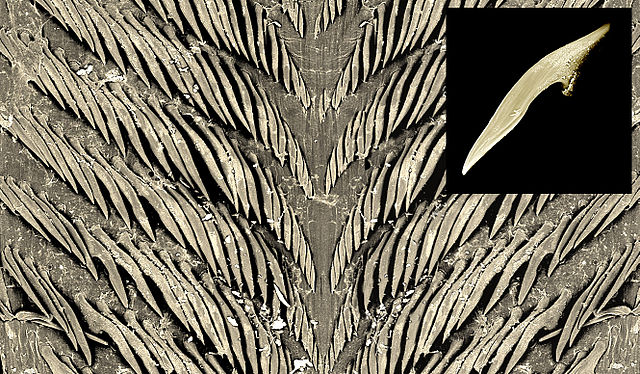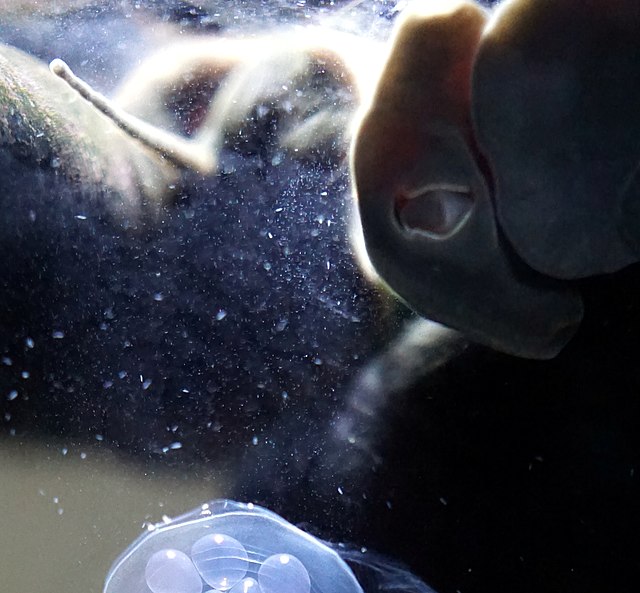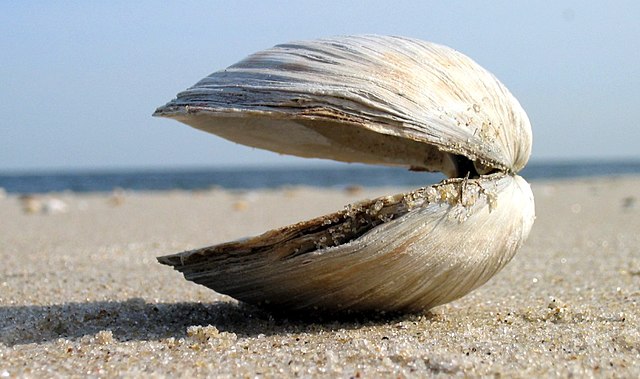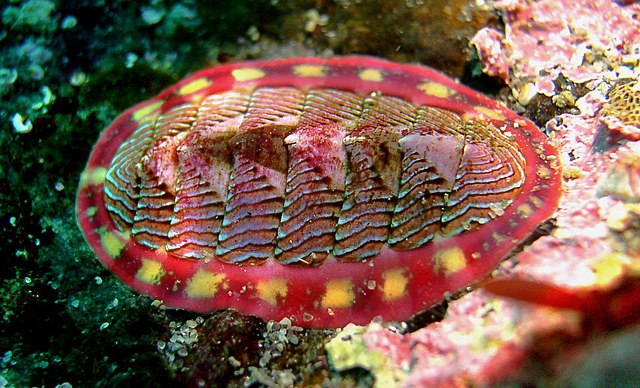The radula is an anatomical structure used by mollusks for feeding, sometimes compared to a tongue. It is a minutely toothed, chitinous ribbon, which is typically used for scraping or cutting food before the food enters the esophagus. The radula is unique to the mollusks, and is found in every class of mollusk except the bivalves, which instead use cilia, waving filaments that bring minute organisms to the mouth.
Radula and individual tooth of the predatory ghost slug, Selenochlamys ysbryda
Microscopic detail of a docoglossan radula showing the denticles or teeth
Tracks made by terrestrial gastropods with their radulas, scraping green algae from a surface inside a greenhouse
Upper right: Mouth of a Planorbarius corneus freshwater snail with the radula visible.
Mollusca is the second-largest phylum of invertebrate animals, after Arthropoda; members are known as molluscs or mollusks. Around 76,000 extant species of molluscs are recognized. The number of fossil species is estimated between 60,000 and 100,000 additional species. The proportion of undescribed species is very high. Many taxa remain poorly studied.
Image: Grapevinesnail 01a
Image: Octopus 2
Image: Clams on Sandy Hook beaches panoramio
Image: Tonicella lineata








